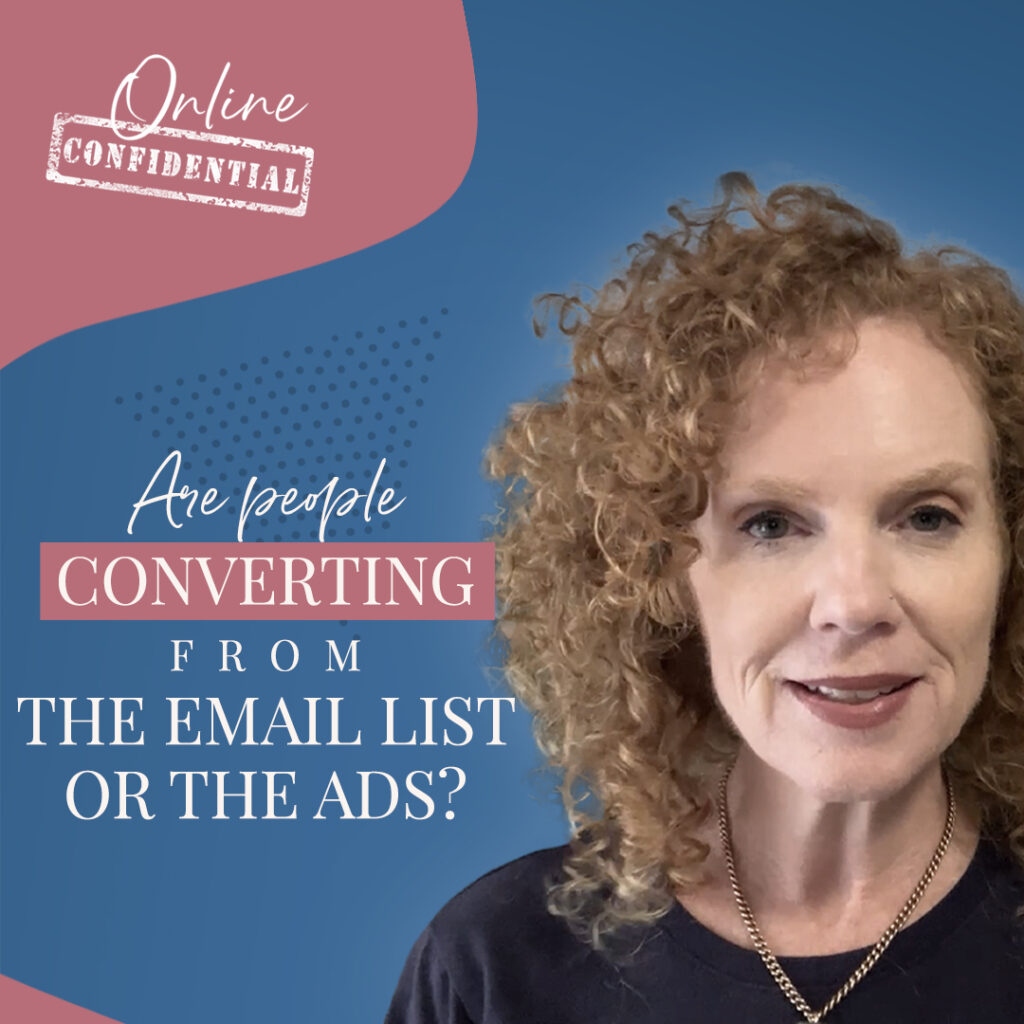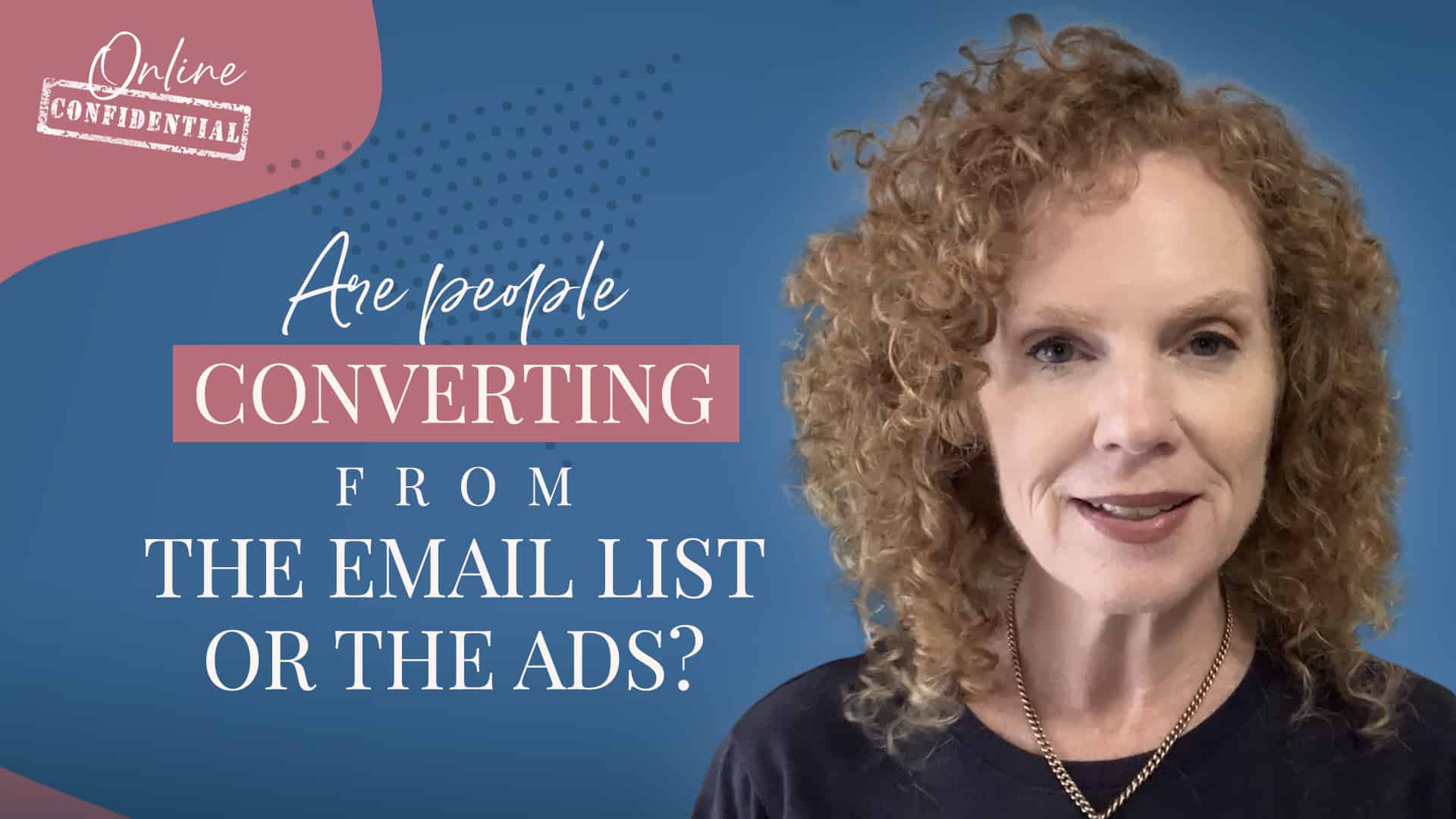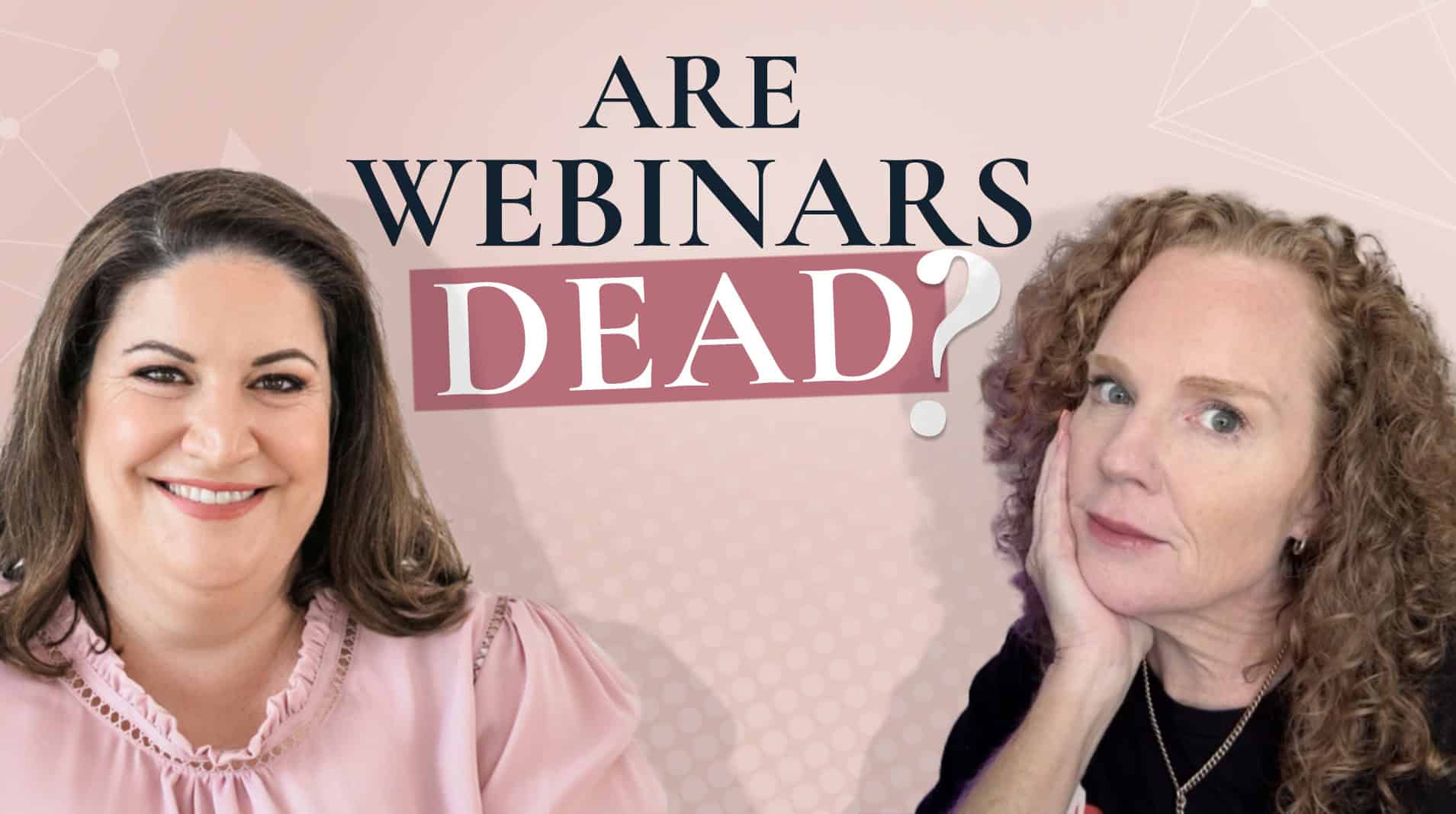Key Highlights:
[00:00:44] What are the typical email benchmarks you should know?
[00:01:50] What should you look at to measure email performance?
[00:02:30] Why ads can help when email open rates are low
[00:03:12] How to measure paid traffic vs. organic traffic[00:04:11] What to focus on when you have incomplete data on Facebook
[00:00:00] How do you know if people are converting from the email list or from the ads? Great question. Well, that’s what we are talking about today in this episode of Online Confidential, where I take you behind the scenes to talk about ‘Secret Ad Manager’ business.
There’s a launch going on for your client. They’ve got a great size email list and they’re [00:00:30] running ads as well. And so obviously the question on everybody’s lips is ‘are they coming in from the emails, or are they coming in from the ads?’
Well, question of the ages. It’s a holistic thing. I like to say Facebook and our emails, they just work hand in hand.
Let’s take a look at typical benchmarks for emails
When we actually look at the typical benchmarks of emails where there may be a list of 10,000 people, you think, that’s fantastic, 10,000 people. That’s [00:01:00] huge. 70% of them typically aren’t opening their emails. So you may have a 30% open rate, which takes that list of 10,000 down to 3,000. Of those 3,000 people who opened the email, you would typically have a 1% click through rate.
So the 3,000 who opened the email with a 1% click through rate is now 30 people who would click on that link to go over to a landing [00:01:30] page or conversion page and opt in.
10,000 down to 30 scary numbers. You might even think, what’s the point in list building? Well, it is super important and that 10% that do open, purchase, click everything, make it all worthwhile.
That’s just illustrating the numbers. You could very easily go in and see the list of people who actually clicked on the links in the emails. If you really want to get up close with the data, that’s how you could [00:02:00] do it.
What do you look at to measure email performance?
You’d be exporting and taking a look at all the people that have clicked a link, who’s ended up converting and do a bit of a cross reference.
You can do that when you’re not at big scale and you’re not getting lots and lots of sales in. Even then there’s some cross referencing that you can do. Obviously it’s easier when the numbers are smaller.
That’s one way to go about it. You can pretty much say that the ads are going to be getting so much [00:02:30] more than the emails, even though the people who are opening and clicking are highly engaged, for 70% of our email audience, they’re not even opening their emails. So getting the ads in front of them is actually what captures their attention.
And they may see an ad next time they go into their inbox and see the email from them. ‘Oh, let’s right, I saw something in Facebook from them’ and that triggers them to open it up and click on the email. In that case, if they end up going through and converting, [00:03:00] the ad will get the attribution for it because they saw the ad and then the last day they saw before taking that conversion event will be attributed to the ad.
So that’s going to help with your numbers.
But what does it all mean? Where do you go? What do you look at?
How to measure paid traffic vs. organic traffic
One of the other approaches that I’ve had clients do in the past is have separate funnels. So they’ll have a funnel for their organic social media posting, and then they’ll have a funnel for their Facebook paid [00:03:30] traffic.
And so when people come in through either funnel, they’re getting tagged so we know which funnel they’ve come in through. However, you will still have that same overlap where people have been on the emails, they’re getting the emails, but then they see an ad on Facebook, they click on that, and then they come through the Facebook funnel.
So while it is really hard, while we do want to give clients some nice, clear numbers, UTM parameters are certainly another way that you can try and do that. But [00:04:00] you’re going to have the same sort of issues. If they’re in the environment where they’re on the email list and engaged on Facebook and you’re getting the ads out to them, there is going to be overlap and things are going to be muddy.
It all comes back to acknowledging that it’s a holistic approach that emails and Facebook ads work hand in hand to help us get the results that we want to achieve.
Sometimes ad performance can’t be measured
The client might say, ‘oh, we [00:04:30] had 20 sales. It looks like only three came from Facebook, because the other 17 were already on our list’.
And you may only have the three there on Facebook that were actually attributed because data is a bit skewed these days.
Another benchmark to look at, to get an indication of whether the ads actually performed would be the KPIs and the benchmarks. Are people actually clicking on the link to the landing page so that they’re engaging with the ads?[00:05:00]
If the ads had a really low click through rate and weren’t engaging with people, then yes, I would be inclined to say it appears as if the ads may not have been pulling their own weight. People weren’t engaging, not clicking with the ads, so we actually weren’t able to get the traffic over to the site.
However, people can still see them. I know I see ads and I don’t click on them all the time but they’re creating awareness. They’re being seen. So someone could see it in their newsfeed and next time they go to their inbox, [00:05:30] they may not normally open our emails, but they open this one because they saw an ad, so they work hand in hand.
You can try UTM parameters for tracking. You may also want to try different funnels to send people through, a paid traffic one versus an organic one. But just know and understand and explain to your client that it’s not foolproof. It’s not a hundred percent. There is going to be overlap, and that’s just the way it is.
So hope you found that helpful. Hope that’s made you [00:06:00] realize that you’re not going crazy. There is only so much we can do with Facebook and tracking, not just now, but always. There’s always been that kind of gray area, but they go hand in hand. Like I say, they complement each other.
Do you have any comments, stories, and ideas about that?
Send us an email success@socialcharlie.com, we’d love to hear from you.
That’s it for today. Just follow along, tap the little button there and we look forward to seeing you next time.





